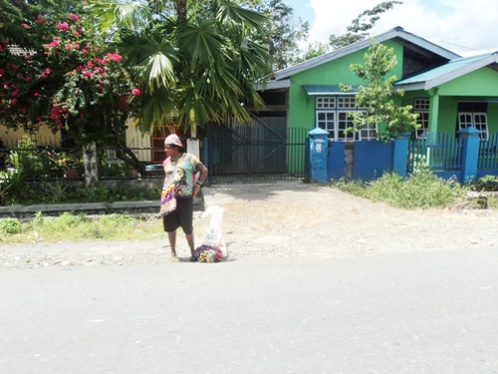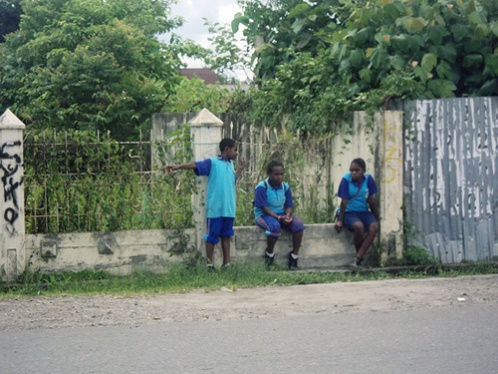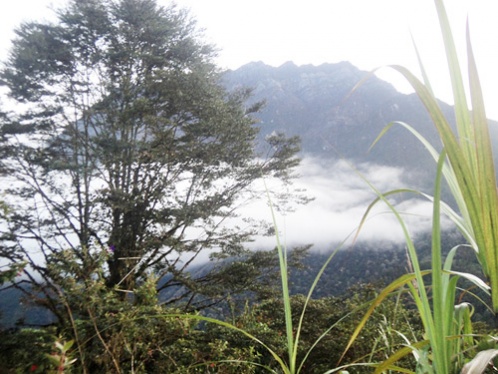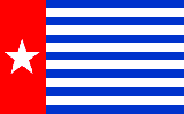http://www.thejakartapost.com/news/2014/01/25/finding-a-fortune-timika.html
Severianus Endi, The Jakarta Post, Timika, Papua | Feature | Sat, January 25 2014, 3:26 PM

“Welcome to paradise on Earth” was the cell phone message sent recently by a friend in Papua.
Timika, the capital of Mimika regency, is the destination of many new arrivals looking to earn a living in the nation’s easternmost province. At Mozes Kilangin Airport, cars are available for rent and ojek (motorcycle taxis) wait for passengers.
The city itself is accessible in about 10 minutes by motorcycle (for Rp 10,000 (8 US cents)) or by car (Rp 100,000). Most of the ojek drivers have made the same journey themselves, coming from other provinces to find their fortunes.
One driver, Ipul, from Makassar, South Sulawesi, graduated from an automotive vocational high school in his hometown. The 18-year-old says he arrived in Timika three months ago and started work as an ojek driver. “I’m working here while waiting for replies to my job applications.”
Ipul says that there’s money to be made in Timika, despite higher prices for some items. “If my applications fail, I may return to Makassar to study at college. After graduation, I’ll be back.”
Another ojek driver, Minggus, from Ambon, Maluku, has plied his trade at the airport for 10 years. “I bought this new motorbike over one year in installments,” the 42-year-old said. “Unlike in Ambon, Timika is a moneymaker. When I got back home, I was surprised by mostly higher prices in Ambon.”

One chauffer for hire, Rizal, also from Makassar, has worked for two years in Timika. Although business has been off, the 26-year-old is determined to continue. “The whole-day rental is fairly high, Rp 700,000. Carrying passengers from the airport costs only Rp 100,000.”
The drivers are overwhelmingly foreign: Rizal said that local residents from the Komoro and Amungme ethnic groups did not work as ojek drivers.
Meanwhile, in contrast to the relative bustle of Timika, the nearby Jaya Wijaya mountain range offers peaks topping 4,000 meters that stretch as far as Papua New Guinea.
The region’s valleys and mountains offer gorgeous snowcapped views. Cold air pervades, merging with fog that hangs lower than the summits of the peaks and creates the spectacle of a fairyland.
Doddie, 41, a Jakarta native currently working in Mimika, said he experienced the chill of Mount Carstensz when he scaled it in 2007.
Showing pictures on his cell phone, Doddie said it took six hours to climb from the foot of the mountain to the snow line. “Its slopes have a gradient of 45 degrees or more, with a temperature range of 3 to 5 degrees.”
The three famous peaks of the Jaya Wijaya mountains are Carstensz Pyramid, Puncak Mandala and Puncak Trikora. Of the three, Carstensz Pyramid, also known as Puncak Jaya, is the highest and the only summit with an icecap in Indonesia.
“We don’t need to go to Europe to touch the snow. We have it in this tropical country as long as we can climb,” Doddie said.
The name for Carstensz was derived from the Dutch seaman and explorer who was reportedly the first European to discover a snowcapped mountain near the equator. His discovery was initially ridiculed by those who thought it impossible to see snow in the tropics.

Timika, however, is a betel lover’s paradise. Local residents are so fond of chewing areca nuts that in several places there are warnings that read: “Spitting on the floor and wall is forbidden.”
The signs are needed as the saliva of betel chewers is red and causes stains.
Papuan women selling betel are easy to find. One is Mama Yuli, 45, who sells the nuts while watching over her grandchild on Jl. Ahmad Yani, Timika, almost every day.
While the nuts are chewed with betel leaves in Kalimanatan, in Papua, connoisseurs also eat the fruit of the betel, which has the same hot taste. “It’s Papuan betel,” Yuli says.
Pariri, 40, from Serui in the north Papua, is a betel lover, saying that local people favored the nuts and frequently served them during rituals.
“In Serui and Biak, fifth graders are chewing the nuts. You may not believe it until you see it,” said the man who has been working in Timika for 10 years.
For fishermen, chewing betel is a defense against the sea breeze, while those living at higher altitudes also say it also has a warming affect.
“The nuts also maintain the vitality of both sexes,” Paiir said through red-stain teeth. “I’ve proven it myself.”
The betel nuts can be mixed with lime made from the burned white shells of a local swamp mollusk called bia.
Another betel lover, Zeth, 34, from Biak Island, said he eats up to 30 nuts daily. “I prefer betelto cigarettes or coffee. After meals, I always chew the nuts.”
While Pariri and Zeth came to Timika, both are native Papuans. They maintain a spirit of brotherhood, shown by their unique way of greeting one another.
When one extends his or her index finger, the other will pinch it with the index and ring fingers before snapping the joints with a slight cracking sound. Then first person has to reciprocate with the same move before they shake hands.
If one comes from other regions, a greeting word should be uttered when shaking hands. The local term for greeting another is diru for Serui Island, tabeak for Biak Island and amole for Timika, meaning salam, or best wishes in Indonesian.
Amole, Timika!
Photos by JP/Severianus Endi
